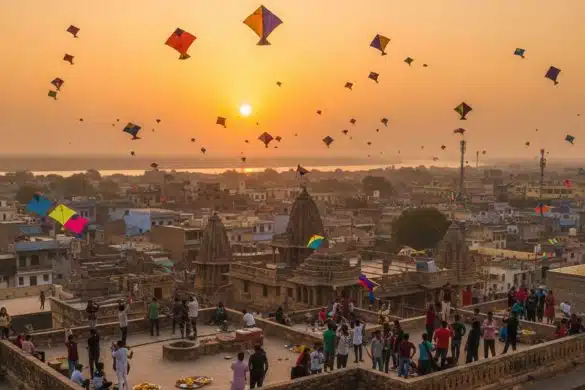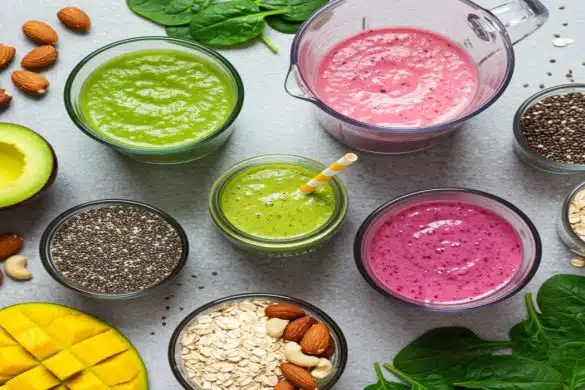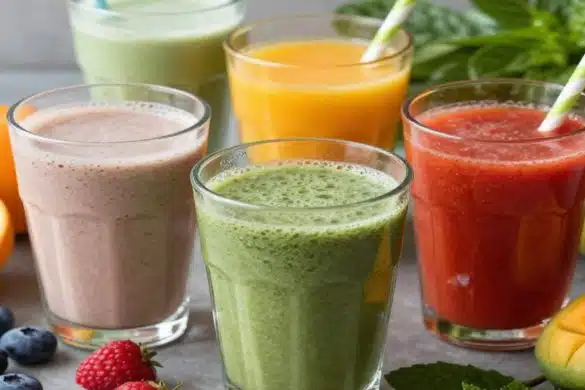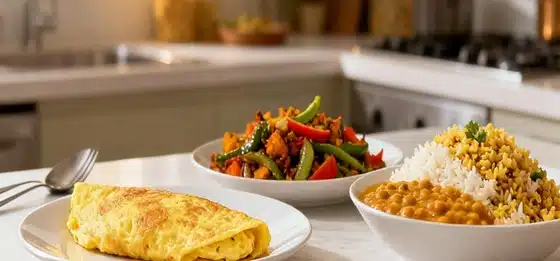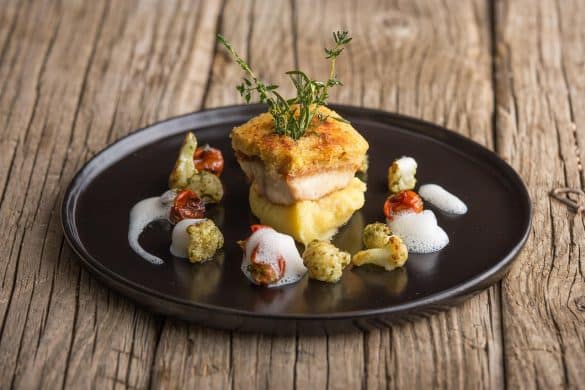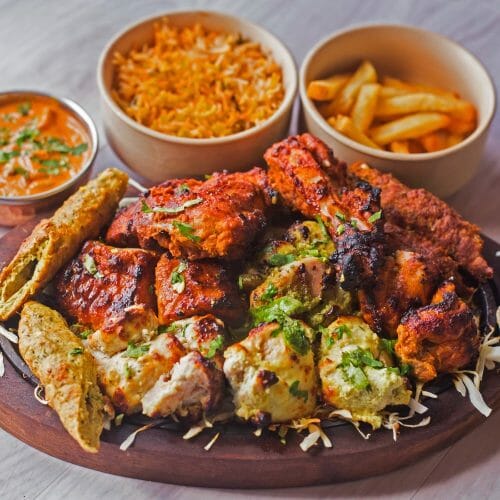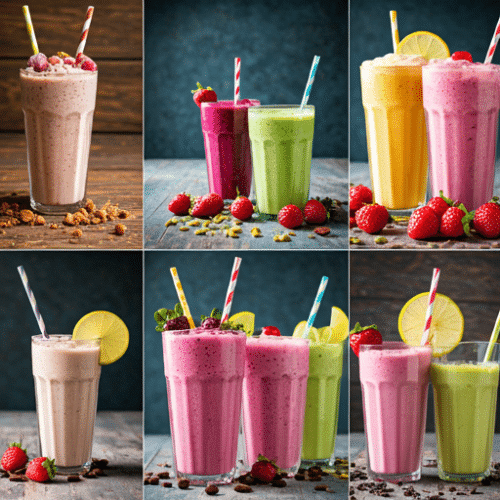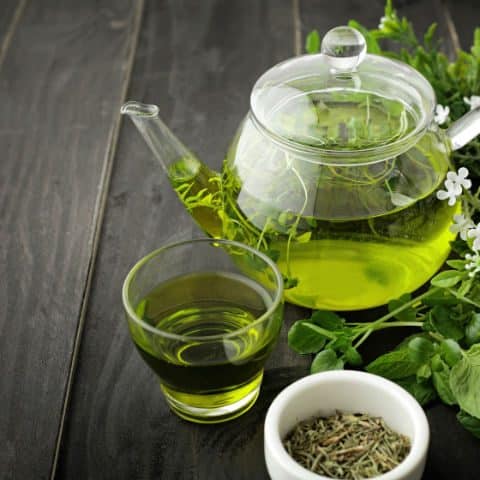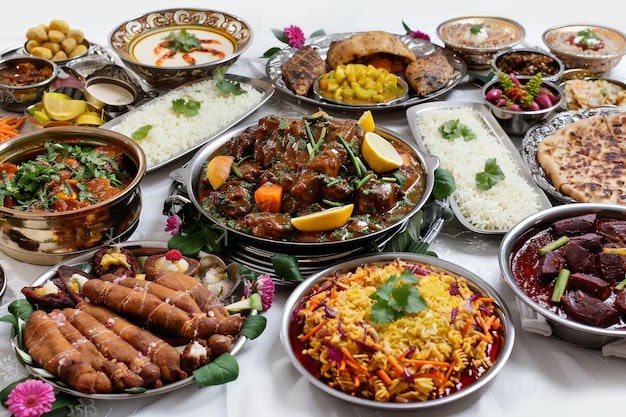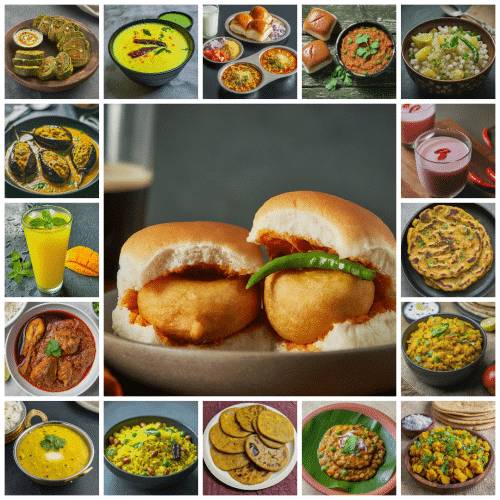Food has long been used to connect cultures, foster understanding and celebrate diversity. For many people living in India, cuisine is integral to their identity and culture. This article will explore what differentiates Pakistani food from North Indian food – two distinct cuisines that have similarities yet remain unique in their own right.
At first glance, these two types of food may seem similar due to common ingredients such as ginger, garlic, cumin and coriander; however, subtle differences set them apart. In Pakistan, for example, dishes tend to be spicier than those found in northern India because of the local climate, which necessitates more robust flavours to balance the heat. Additionally, Pakistani cooking relies heavily on aromatic spices like cardamom, cloves and saffron. In contrast, northern Indian dishes often feature creamy sauces or yoghurt-based marinades.
Finally, we can never forget traditional condiments! While chutneys and pickles are popular in India, they take centre stage in Pakistani cuisine with various options, including mint chutney and mango pickles. These flavorful side dishes add a zing to any meal while providing essential vitamins and minerals the body needs.
By delving into each region’s flavour profiles and techniques, we can begin to appreciate the nuances between these two cuisines – discovering why both Pakistani food and North Indian food continue to captivate taste buds around the world!
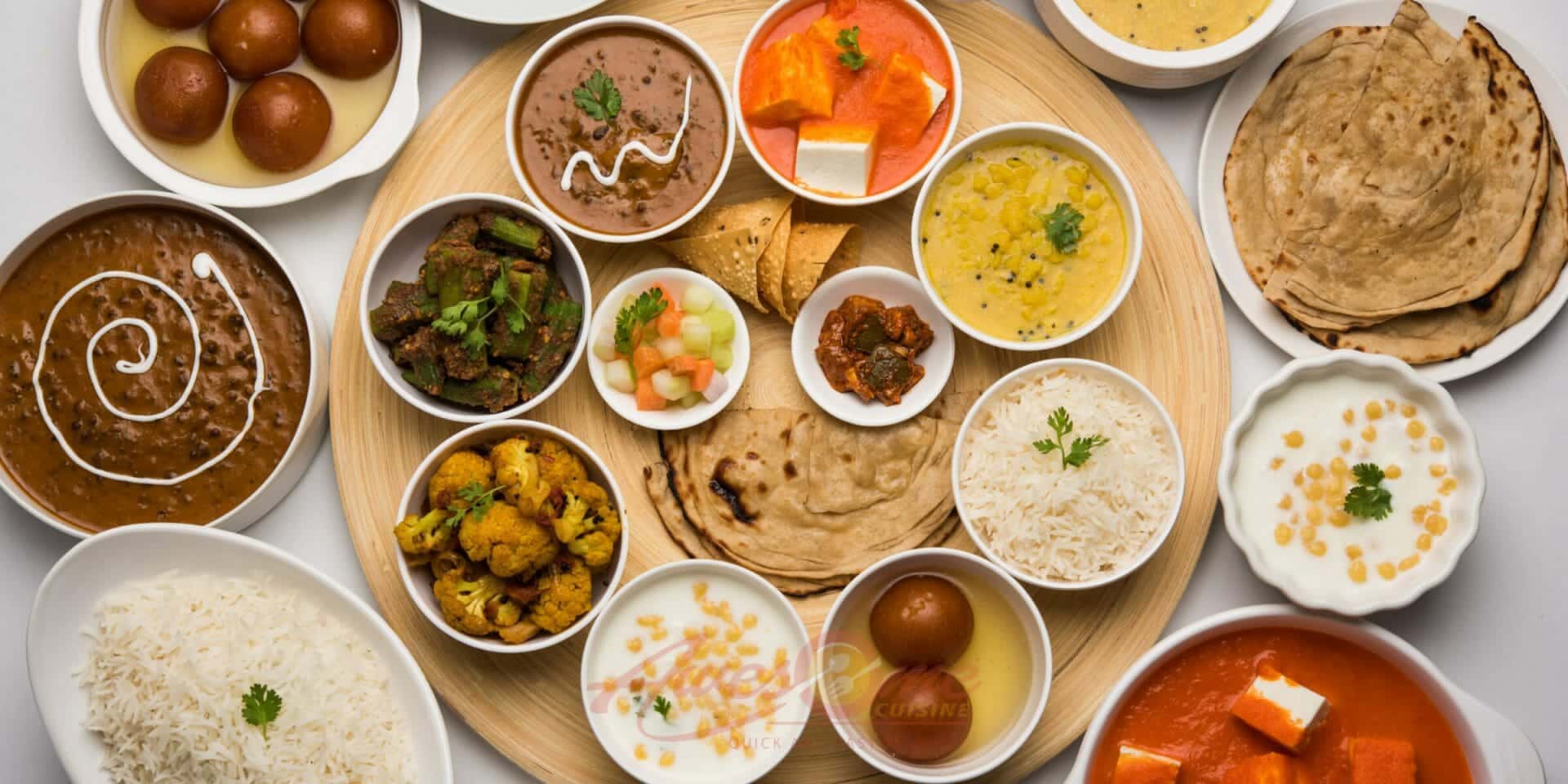
North Indian food and Pakistani Food
Cultural Influences
Pakistani and North Indian cuisines are rooted in the same culture, but they have distinct differences. The cultural influences of these two regions play a significant role in how they each cook their food. Pakistani cuisine is distinctive from its northern counterpart, from spices to preparation techniques.
The most notable difference between North Indian and Pakistani cuisine is spice. While North Indian dishes often contain more masalas (spices) than other culinary styles, Pakistani food typically contains less heat and more aromatic herbs and flavours such as cinnamon, cardamom, saffron, ginger, cumin, garlic and onion. This creates a unique flavour that sets it apart from North Indian curries which tend to be spicier due to their reliance on dried chilli peppers or garam masala.
Another aspect that separates Pakistan’s cooking style from India’s Northern region is its emphasis on fresh ingredients over processed ones. In contrast to traditional North Indian food, which can include heavy cream sauces or fried foods like samosas and pakoras, many Pakistani dishes rely heavily on seasonal produce such as tomatoes, onions, potatoes and spinach for nutrition and flavour. This helps create lighter meals that satisfy the palate without being overly rich or greasy.
Pakistan’s cuisine also differs in terms of technique; while North Indians generally prefer braising meats with long-cooking times using cast iron pots called tapas or karahi pans over open flame stoves – known as Bhatti – Pakistan relies primarily on dry roasting methods where whole spices are blended before adding diced vegetables or proteins into the mix. By relying mainly on dry roasting rather than wet braising techniques used by Indians across the border, Pakistani cooks achieve a fuller depth of flavour without simmering the meat for hours, as is common in some North Indian recipes.
Regional Variations
In addition to the differences in cooking techniques, there are regional variations between Pakistani and North Indian cuisines. While both regions use various herbs and spices such as cardamom, cumin, coriander, garam masala and turmeric, each area has its unique flavour profile due to different ingredients used for certain dishes. For example, North Indian food tends to be spicier than Pakistan’s because it relies heavily on dried chilli peppers or other masalas like Garam Masala. On the other hand, Pakistani recipes often include more fresh vegetables, which help create lighter meals that still satisfy the palate without being overly rich or greasy.
Finally, some Pakistani delicacies can have distinct tastes compared to what you might find in Northern India. For instance, specialities such as pulao (a rice dish with saffron) and karahi gosht (lamb cooked with ginger, garlic paste & tomatoes) are popular throughout Pakistan. Still, they may not be found in most northern Indian restaurants. Similarly, traditional biryani is prepared differently depending on where it is made – while Northern Indians typically add potatoes and yoghurt into the mix when making this dish; Pakistanis prefer adding nuts and dry fruits along with generous amounts of whole spices instead.
With these cultural influences shaping how each region cooks its food, it’s easy to see why Pakistani and North Indian styles vary so much – even if they share many of the same flavours. From preparation methods to ingredients and seasonings used in recipes – both countries offer delicious culinary experiences that reflect their respective cultures’ values and traditions.
Spices And Seasonings
Spices and seasonings are the core of any Pakistani or North Indian dish. From cardamom to cumin, garam masala to turmeric, each region has its unique blend of spices in various recipes. In Pakistan, these spices are often blended into an aromatic mixture called “garam masala”, which is then added to dishes for flavour and aromatics. On the other hand, Northern Indians rely heavily on dried chilli peppers and other masalas like Garam Masala when cooking their meals.
However, it’s not just about the type of ingredients being used – but also how they’re combined that makes all the difference. For instance, while Pakistani cuisine tends to be more subtle in its flavours with milder use of spicing than what you’d find in North India, both regions exploit herbs and spices masterfully by blending them into savoury combinations that enhance the overall taste experience.
By combining traditional techniques with carefully selected seasonings, people from either side of the border can create delicious dishes that reflect values and traditions passed down through generations. Although there may be some similarities between Pakistani and North Indian cuisines due to regional influences – ultimately, each culture brings something unique to the table that sets it apart.
Typical Dishes
Beyond the spices and seasonings, Pakistani and North Indian cuisines also differ in their typical dishes. For instance, while Northern India is known for its tandoori-style cooking – with meats like chicken marinated in yoghurt, ginger, garlic paste and a variety of spice blends before being cooked in an oven over high heat – Pakistan specializes more heavily in curries that are slightly spicier than those found elsewhere. Additionally, naan bread from both regions can be made using different types of flour to create unique flavours. In contrast, traditional flatbreads such as roti (or chapati) are staples throughout much of South Asia.
Additionally, when it comes to desserts, plenty of sweet treats are associated with each region. In particular, Gulab Jamun from North India has become a popular dessert worldwide due to its syrupy sweetness; on the other hand, Sheer Khurma originating from Pakistan, features dates and vermicelli noodles, making it an excellent choice for special occasions or holidays. Lastly, when looking at snacks, you have your classic samosas, which are deep-fried pastries usually filled with potatoes and peas, but they can sometimes contain other ingredients too; plus Pakora, which is fritters typically made out of vegetables dipped in spicy batter then quickly fried up into crunchy morsels – perfect for satisfying cravings!
No matter what dish is being prepared, one thing remains true: these two cultures bring a wealth of flavour and tradition to the table every time they cook something new.
Popular Ingredients
Regarding popular ingredients, Pakistani and North Indian cuisines have some definite similarities but plenty of differences. For example, both rely heavily on using fresh herbs such as coriander, mint, ginger and garlic. At the same time, various spices, including cardamom, cumin and turmeric, are common in many recipes from either region. However, those hailing from Pakistan may favour additional heat-inducing spices like chilli powder or Kashmiri red pepper for extra flavour – making their dishes more complex than what you’d find in Northern India.
In addition to these shared staples, other components make each cuisine unique. In particular, yoghurt is used much more frequently in Pakistani recipes as opposed to its usage in North Indian food, which tends to lean towards creamier preparations instead. Also, chickpeas (or chana) play an essential role here, too – often ground into flour for baking or made into stewed curries depending on the dish being prepared. And lastly, ghee (clarified butter) frequently appears throughout South Asian cooking. However, it’s notably utilized more heavily in certain parts of Pakistan, where they emphasize developing depth of flavour with every meal.
Overall, we can see that despite having many overlapping ingredients, both regions employ them differently when creating traditional meals at home or out in restaurants – resulting in two distinct flavours!
Preparation Techniques
Whereas ingredients may provide the base for a dish, the preparation techniques bring out its full flavour and make each cuisine genuinely distinct. In North Indian cooking, you’ll often see methods like simmering, deep-frying or slow roasting employed to achieve maximum depth of taste –. In contrast, in Pakistan, such approaches are less common due to their preference for lighter fare instead. Instead, they favour dry-cooking on high heat with minimal oil and spices and utilizing Instant Pot technology, which allows them to quickly cook curries or other dishes in a fraction of the time it would take otherwise.
Aside from these fundamental differences, though, more subtle nuances are also at play here. For instance, steaming is used extensively throughout South Asian kitchens. Still, Pakistani cooks tend to be fussier when doing so – preferring tightly sealed containers that trap all the moisture within while imparting an intense aroma and flavour into whatever’s inside. Similarly, marinating is another popular method utilized by both regions; however, again, we can note some distinctions between them: Northern India mainly uses yoghurt-based sauces, while those hailing from Pakistan opt for mixtures made up of oil, chilli powder and other spices depending on the desired outcome.
In short, although there are some similarities between Pakistani and North Indian cuisines, overall, they rely heavily upon different techniques when creating delicious meals – making each one unique in its own right!
Conclusion
Pakistani cuisine is a unique and delicious blend of North Indian, Middle Eastern, Central Asian and Persian influences. With its distinct flavours and ingredients, Pakistani food offers something for everyone. From spicy curries to zesty kebabs, plenty of dishes offer an exciting culinary experience. For lunch or dinner, Pakistani food will always tantalize your taste buds.
What sets Pakistani food apart from other cuisines? It’s more than just the spices and seasonings; the preparation techniques also play a role in crafting these flavorful meals. In addition to using fresh herbs and vegetables, many traditional dishes involve slow-cooking methods such as simmering and roasting, which bring out the aromas and textures of each ingredient.
Pakistani food is a delectable combination of bold spice profiles with subtle nuances depending on regional variation. Why not give this mouthwatering cuisine a try? Who knows – you may ask, “What else can I make with these amazing flavours?”…that will bring my taste buds joy!

